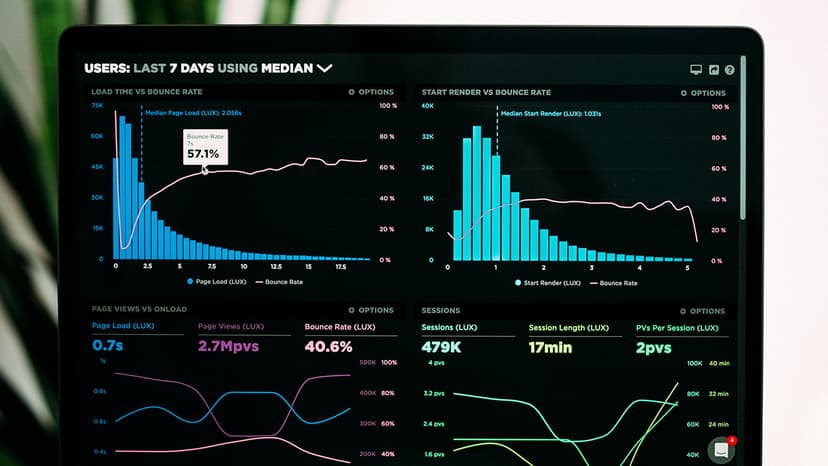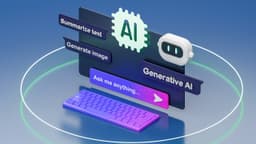How Chatbots Learn from Web Content
Chatbots stand as pivotal gatekeepers of information in today’s fast-paced digital landscape. They streamline the dialogue between humans and computers with remarkable efficiency. And it's intriguing to consider how these adept conversational partners are able to retrieve and utilize vast stores of knowledge from the web pages we peruse through search engines like Google or Bing. Allow me to guide you through an exploration of the sophisticated technologies that equip chatbots with the capability to learn from the wealth of online resources.
The Magic Behind the Screen: Web Scraping and Data Harvesting
Delving into the technicalities, web scraping is a sophisticated mechanism that enables chatbots to extract a treasure trove of information from various web pages. This process employs advanced software tools that send out HTTP requests to targeted URLs, similar to how a browser requests a page when you click on a link. However, instead of presenting the information visually, web scraping tools analyze the underlying HTML, XML, or JSON code of web pages to siphon off the required data.
To ensure the gathered data is relevant and precise, chatbots often use specific algorithms known as parsers. These parsers are designed to understand the structure of web page elements, identifying patterns, and hierarchies within the code that signify valuable information. By isolating specific HTML tags or attributes, a parser can extract items such as paragraph texts, links, metadata, and more.
Moreover, web scraping must be adaptive and intelligent to handle the dynamic nature of the web. Websites frequently change their layouts and coding practices, which can break a scraper's functionality. To combat this, sophisticated scraping technologies employ selectors or XPath queries, which are designed to locate content within the constantly shifting DOM (Document Object Model) of a webpage. These selectors are crafted to be both specific enough to extract the right data and flexible enough to withstand minor changes in the web page's structure.
Once the data is harvested, it is often in a raw, unstructured form that is not immediately usable by AI models. This is where data preprocessing comes into play. In this phase, the data is cleaned, normalized, and transformed into a structured format, such as a CSV, JSON file, or a relational database. This structuring makes it easier for machine learning models to process the information and learn from it.
For chatbots, whose main function is to understand and generate human language, text preprocessing is particularly crucial. This involves techniques such as tokenization (breaking down paragraphs into sentences or words), stemming (reducing words to their root form), and removing stopwords (filtering out common words like 'and', 'the', etc., which have little value in processing language).
Beyond the extraction and preprocessing, there's an ongoing development in ethical web scraping practices. Since web scraping walks a fine line between data collection and privacy infringement, chatbots are equipped with protocols to respect robots.txt files – which indicate the parts of a website that are off-limits to scrapers – and are programmed to comply with legal frameworks like GDPR and CCPA.
In essence, web scraping and data harvesting are the unsung heroes in the realm of chatbot intelligence, furnishing AI with the raw material required to simulate human-like interactions and understanding. Through meticulous programming and adherence to ethical standards, the digital ants of the internet gather the crumbs of data, enabling chatbots to continuously expand their knowledge base and serve users more effectively.
Digesting the Data: Natural Language Processing (NLP)
Post data acquisition, Natural Language Processing (NLP) is what allows chatbots to digest and understand human language. NLP combines computational linguistics—rule-based modeling of human language—with statistical, machine learning, and deep learning models. These models are trained to recognize language patterns and interpret the meaning of texts by considering the complexities of human language, such as idioms, slang, and varying syntax.
A critical aspect of NLP is text analysis. It encompasses several layers of language processing:
- Lexical analysis: Here, algorithms break down complex sentences into tokens or words, which simplifies further processing.
- Syntactic analysis (Parsing): This step involves analyzing grammatical structures and how words relate to each other within a sentence, often building a parse tree.
- Semantic analysis: At this stage, the chatbot attempts to comprehend the meaning conveyed by a sentence. It uses techniques like Named Entity Recognition (NER) to identify and categorize key elements in the text into predefined categories and Part-of-Speech (POS) tagging to classify words into their respective parts of speech.
- Pragmatic analysis: To truly understand the intent behind a statement, chatbots apply pragmatic analysis, considering context beyond the written words.
For sentiment analysis, NLP models are trained on large datasets that have been manually labeled for sentiment. These models can then infer the sentiment of new sentences, categorizing them as positive, negative, or neutral. This capability is crucial for chatbots engaged in customer service, allowing them to respond appropriately to a user's mood or tone.
The Brain of the Bot: Machine Learning and Neural Networks
The cognitive functioning of chatbots is powered by machine learning (ML), particularly through the use of algorithms that enable pattern recognition, learning, and decision-making. This is akin to nurturing a digital brain with a diet of data, algorithms, and computational power.
Neural networks, a subset of ML, are particularly significant. These networks are composed of layers of artificial neurons or nodes that are interconnected and transmit signals to each other. These signals are processed by each neuron, and the strength of the connections (weights) between neurons is adjusted during training. This is based on a method known as backpropagation, where the network learns from errors by adjusting the weights to minimize the loss function.
Advanced neural networks, such as Convolutional Neural Networks (CNNs) for image processing and Recurrent Neural Networks (RNNs) for sequential data like text, enable chatbots to process inputs in a more human-like manner. For instance, RNNs can remember previous inputs due to their internal memory, which is essential when processing a conversation that spans multiple sentences.
For language tasks, chatbots often utilize a specific type of RNN called Long Short-Term Memory (LSTM) networks. LSTMs are uniquely capable of learning long-term dependencies and are less likely to forget important information, a common problem in standard RNNs.
The combination of these neural network architectures allows chatbots to not just understand text input but also generate human-like text outputs. Sequence-to-sequence models, which consist of an encoder-decoder architecture, are often employed in chatbots to generate conversational language. These models work by encoding a received input sequence into a fixed-dimensional context vector, which the decoder then uses to generate a meaningful response.
In summary, the interplay of NLP and advanced ML techniques, particularly neural networks, equips chatbots with the ability to interpret and engage in human-like dialogue. With each interaction and piece of processed data, these AI-powered entities refine their understanding and response mechanisms, getting ever closer to a seamless human-computer interaction experience.
The Continuous Cycle of Learning: Feedback Loops
The interaction between chatbots and users establishes a dynamic environment for learning known as feedback loops. These loops are crucial for the iterative improvement of the chatbot's performance. Each user interaction is an opportunity for the chatbot to refine its algorithms and enhance its conversational abilities.
In technical terms, feedback loops are realized through a process known as reinforcement learning (RL). In RL, an agent (in this case, the chatbot) learns to make decisions by performing actions and observing the results, which include rewards or penalties. The chatbot's goal is to maximize the cumulative reward, which often correlates with user satisfaction in this context.
Here's a breakdown of how this learning cycle operates:
- Data Collection: Every conversation with a user is a source of data. This includes the inputs from the user, the chatbot's responses, and any follow-up or corrective feedback from the user.
- Analysis: The data is then analyzed to determine the success of the interaction. This could be measured by direct user feedback, the length of the conversation, or the resolution of the user's query.
- Adjustment: Based on the analysis, adjustments are made to the chatbot's ML models. This might involve retraining the model with new data or tweaking the algorithms that generate responses.
- Reinforcement Signals: As part of RL, a chatbot receives reinforcement signals that are used to fine-tune its decision-making processes. Positive signals encourage the bot to repeat certain behaviors, while negative signals prompt it to avoid them.
- Model Updating: Machine learning models are updated with new knowledge gleaned from recent interactions, incorporating insights into future responses. This might involve techniques like online learning, where models are updated on-the-fly, or batch learning, where updates are made periodically.
A specific technique used in feedback loops is active learning. With active learning, a chatbot can identify gaps in its knowledge and request additional information or clarification. This enables the chatbot to actively improve its understanding and performance in areas where it is less confident.
Moreover, A/B testing is often employed to compare different versions of the chatbot's algorithms. By directing a subset of interactions to each version, developers can empirically determine which one performs better and should be adopted.
Error analysis also plays a pivotal role in feedback loops. By examining cases where the chatbot failed to provide satisfactory responses, developers can identify and correct the underlying issues in the model or data.
Feedback loops are not only about correcting errors but also about evolving the chatbot's abilities to engage in more sophisticated dialogues and handle a broader range of topics. This continuous learning cycle is what drives the evolution of chatbots from simple scripted responders to advanced conversational agents capable of providing rich, contextual, and personalized user experiences.
The Future is Now: GPT and Beyond
OpenAI's Generative Pre-trained Transformer (GPT) models represent a pinnacle in the realm of chatbot evolution, harnessing the power of deep learning to emulate human-like text generation. The GPT models, especially the latest iterations, are distinguished by their vast neural networks, boasting an extraordinary number of parameters that can model the intricacies of human language with remarkable subtlety. These AI marvels are pre-trained on an extensive corpus of text sourced from the internet, enabling them to capture a wide spectrum of linguistic patterns, styles, and knowledge.
The pre-training phase imbues GPT models with a foundational understanding of language. However, their true prowess is revealed in their ability to fine-tune to specific tasks such as translation, summarization, question-answering, and conversational engagement. This fine-tuning is achieved through subsequent training phases, where the model is exposed to specialized datasets, allowing it to hone its skills for the task at hand.
Moreover, the GPT framework is designed to be autoregressive, meaning that it generates text by predicting the next word in a sequence given all the previous words, thus producing coherent and contextually relevant text. It is this predictive capability that enables GPT-powered chatbots to construct sentences that flow naturally and are syntactically sound, resembling the way humans converse.
With every new version, GPT models are breaking barriers, pushing the boundaries of what artificial intelligence can achieve in understanding and generating human language.
Creative and Clear: The Art of Chatbot Communication
Chatbots are not mere vessels of information but also architects of dialogue, weaving threads of data into the tapestry of conversation. The artistry lies in the bot’s ability to articulate responses that are not just factually correct but also contextually resonant and creatively engaging. To achieve this, chatbots leverage techniques such as contextual embedding and language generation algorithms that ensure the responses are not only relevant but also diverse and dynamically tailored to the user's input.
This balance is maintained by sophisticated algorithms that evaluate the appropriateness of content, ensuring clarity in communication while adding a dash of creativity to make interactions more lively and human-like. The AI's understanding of cultural idioms, humor, and colloquialisms plays a significant role in crafting responses that resonate on a human level.
The Learning Labyrinth
The evolution of chatbots is a testament to the transformative power of AI, promising a future where each interaction with these digital entities is an enriching experience. With each query answered and every conversation engaged, chatbots are continuously expanding their horizons, adapting, and growing in intelligence. This synergistic evolution heralds a new epoch in the information age, where the line between human and machine intelligence becomes ever more nuanced, leading to a partnership that redefines our interaction with the digital world.
(Edited on August 26, 2024)












